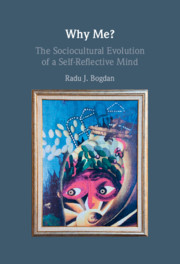3 - With Self in Mind
from Part I - The Architecture
Published online by Cambridge University Press: 28 May 2021
Summary
The work of autobiographical memory can be described as mental travel with self explicitly in mind. This self is a nonactual, virtual and distant self, most likely and most often projected and envisaged narratively from a third-person or observer perspective. This is also the self of self-reflection. To get a proper understanding of the notion of the self of self-reflection, it will take some elaboration to extricate it from other self-determining mechanisms as well as from established concepts and views of selfhood in general.Section 3.1 distinguishes between selves and senses of selves and explains why only the latter matter in this inquiry into self-reflection. Section 3.2 discusses some important experiments investigating children’s developing sense of their past bodily and mental conditions, associated with their selves, and notes some critical differences between the minds of children before and after the age of four. Section 3.3 elaborates the central notion of a projective sense of a virtual and displaced self.
- Type
- Chapter
- Information
- Why Me?The Sociocultural Evolution of a Self-Reflective Mind, pp. 56 - 72Publisher: Cambridge University PressPrint publication year: 2021



